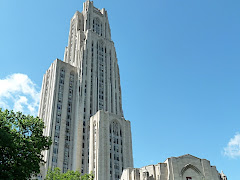architect wanted
You become what you live in. This simple fact means that architects actually have a power of transforming more than just physical structures.But you have to give them a chance. Like asking them to design something.
When I was in high school nearly all my friends lived in blocks of flats. This was normal. Political system did not really care for diversity. Everyone living in virtually the same apartments was not only the result of shortages of everything. It also reinforced the notion that we are all the same and have the same needs. Which of course is never true. After 1989 there was an explosion of design. They may be good or bad but they do not try to squeeze people in the same boxes.
We shopped for a house in US couple of times and always were surprised at how they were marketed. Number of bathrooms, storage areas and number of garages seemed to be the most important feature. Typical modern American house is full of spaces in a search of a function. There are sitting rooms where nobody ever sits, living rooms with cathedral ceiling too high for a room size, twisted corridors leading to unused bedrooms, garages full of random junk with cars parked outside. Oh, and all interior walls are painted beige which appeals to the lowest common denominator taste and supposedly increases the resale value. The theory we proved wrong when our house painted orange, green, yellow and blue sold in a bidding war.
The current state of American houses would upset Frank Lloyd Wright enormously. He strongly believed in human scale, his living rooms have lowered ceilings over sitting areas, his bedrooms are small, his corridors and passage ways - narrow. He did not include attics or basements since, as he was fond of saying, they promote clutter. He preferred open car ports to closed garages arguing that cars unlike horses are unlikely to wander in the night. He designed in harmony with nature: places built into the side of the mountains, using natural light and natural shade.
The results are stunning. Not only beautiful but functional. And very inviting. I wander through Fallingwater and all I can think of is what an incredible place to write code in it would be.
Strangely, people visiting the house with us (we paid for the relatively inexpensive tour option which means sharing the experience with 12 strangers) are not that impressed with the house. They view it as a curiosity and not a place to live. They ask questions about the Kaufmanns (original owners) not about the architect. Questions are variation of: who were those crazies who let FLW ruin their perfect vacation spot, how they made their money, what was the name of their department store (Kaufmann - duh), how many staff they had on the premises and even did they enjoy horse riding (sic!).
So the place of one of the biggest FLW triumphs is also the place where his failure is evident. He did not transform private spaces. Suburbia is full of houses terribly designed and, more often than not, not designed at all. They do differ from the apartments of the socialist Poland, but very often it’s a difference of quantity not a quality.
I know we can’t all live on top of a waterfall. There are just too many people. Neither can we do what Hagans did when they hired FLW to design Kentuck Knob for them because he is dead. But surely we can do better than modern mansions.
I find it hard to believe that what we have now is what people really want. I do think it’s what gadget producers want. After all if you have all these rooms you need to fill them with stuff and buying stuff propels the economy. That’s how the latest American recession started: people stopped buying houses so there was no space for new gadgets.
Is there a middle ground here? Something that would keep economy chugging along without forcing us into the multi-bathroom, giant garage, finished basement monstrosities? There are plenty of empty warehouses around. Maybe we should just buy new things and store them there. And move to smaller but functional spaces for a change.
Or - maybe just a bit more realistically - we can just start paying our architects instead of paying our gadget makers.
